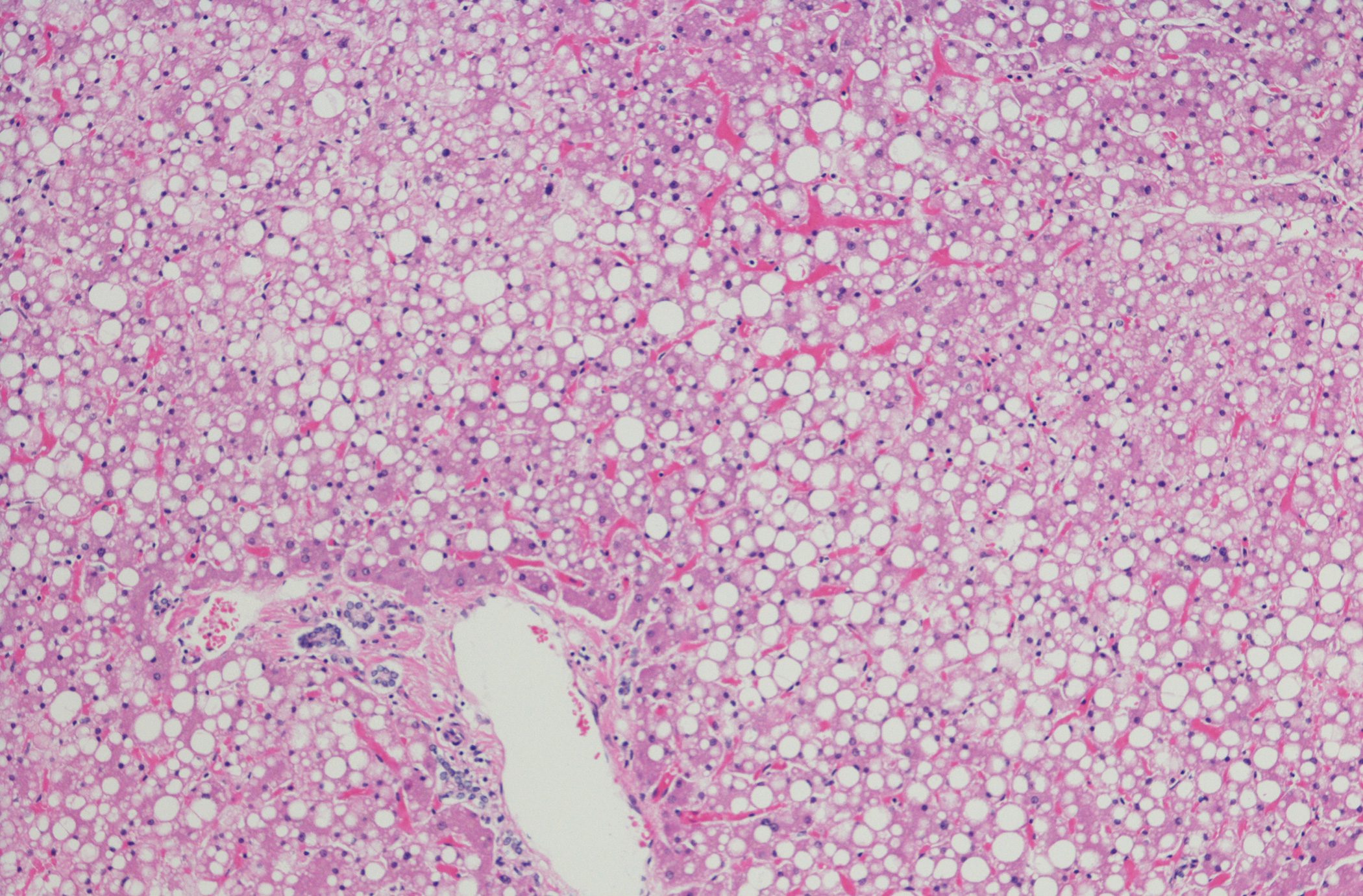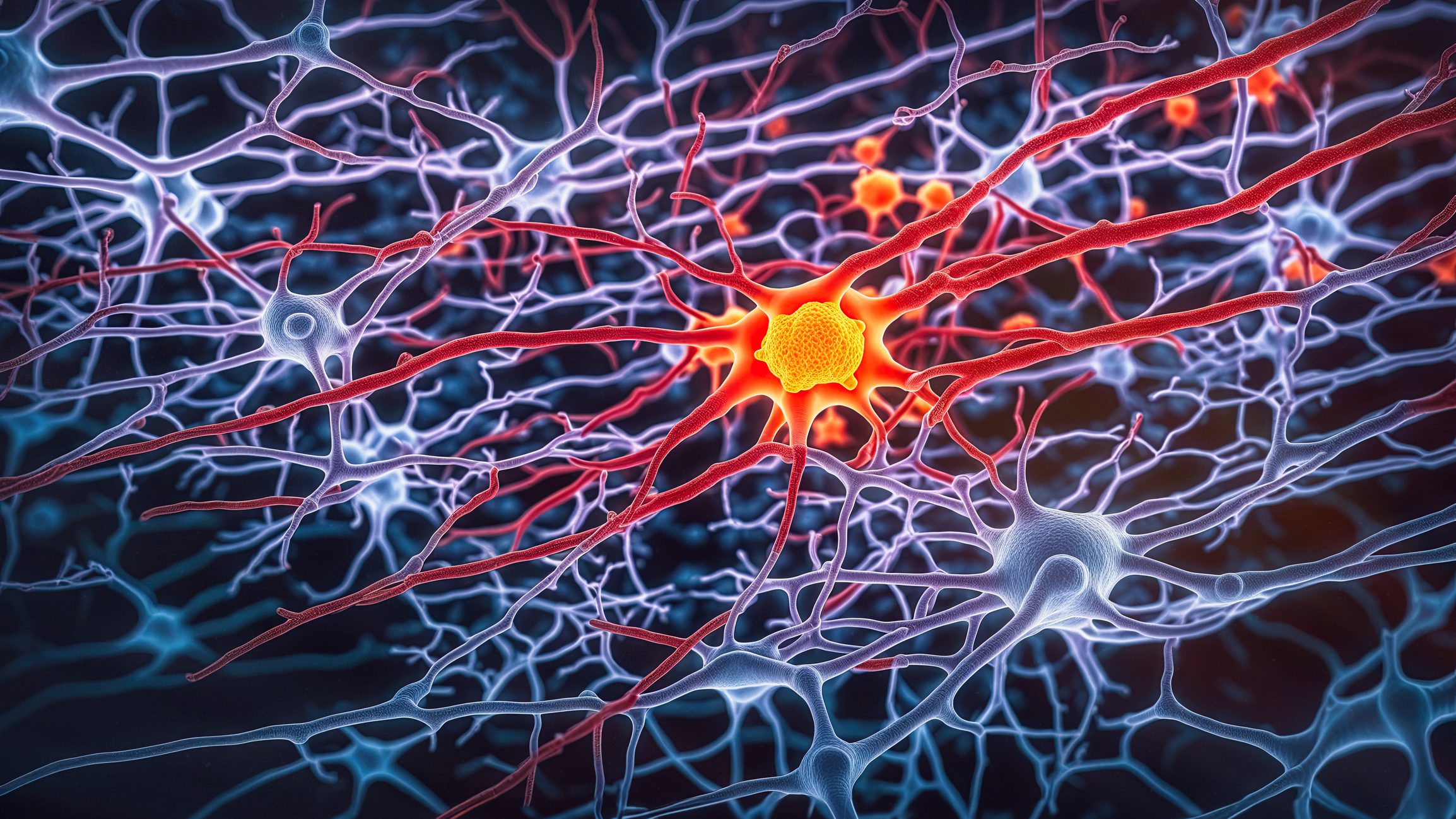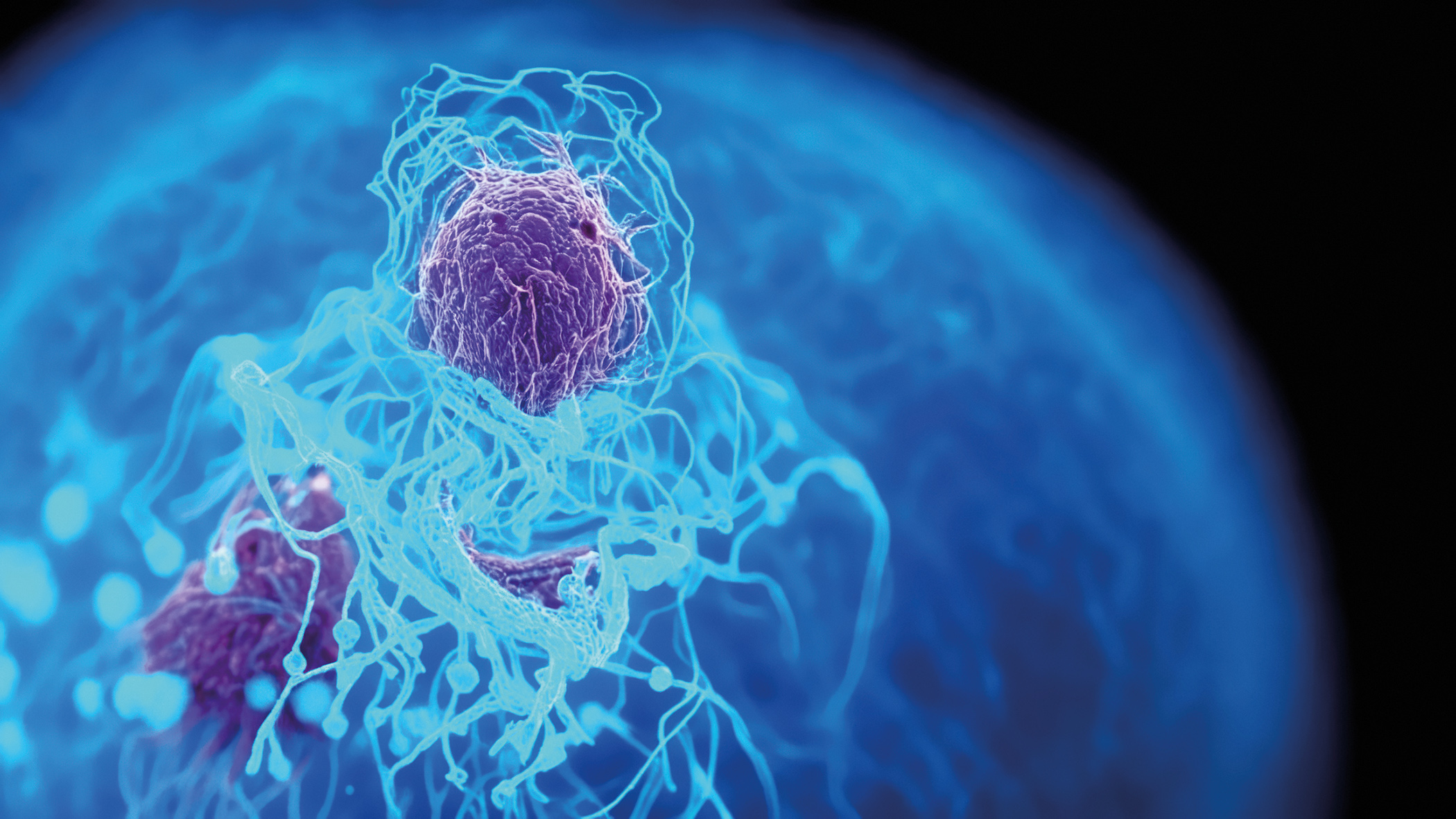Sustained progress has been made in dermato-oncology over the last few years. Nevertheless, there are still situations today where symptom control is paramount. Intralesional treatment options can contribute significantly to this. However, current developments – such as virotherapy – are also aimed at influencing the course of the disease.
The fact that local symptoms such as oozing, burning and bleeding can be influenced by local measures such as electrochemotherapy or intralesional virotherapy is increasingly being exploited clinically. Local tumor control – for example, in the case of easily accessible but inoperable metastases – can already be achieved today by means of local measures. However, the systemic influence of the disease by intralesional therapeutic options remains an unachieved goal, which, thanks to great research efforts, seems to be getting closer. The scientific basis: by injecting the tumor at one site, the immune system is supposed to be activated in such a way that it can better recognize and destroy the tumor at other sites as well. Thus, a “cold” tumor should be transformed into a “hot” tumor. Advances in this field as well as new intralesional treatment approaches were discussed in detail at this year’s German Skin Cancer Congress, which took place between September 8 and 11.
The classic: electrochemotherapy
A local therapeutic option, which has always served local tumor and symptom control in advanced cases, is electrochemotherapy – a combination of electroporation and chemotherapy. In this process, the skin is perforated by needles and altered by the applied current in such a way that the applied chemotherapeutic agent – bleomycin or cisplatin – finds easier access to the tumor tissue. The effect: the cytostatic drug reaches the tumor cell in concentrations up to 10,000 times higher. In addition, the microstructure of endothelial cells is disrupted, reorganization is prevented by the chemotherapeutic agent, and an antivascular effect is produced, which significantly impairs local tumor growth.
Due to this effect, electrochemotherapy has already been included in various treatment guidelines, including the S3 guideline of malignant melanoma for the treatment of non-operable in-transit and satellite metastases [1]. However, in breast carcinoma, the AGO guideline also provides for electrochemotherapy for local recurrences in non-curative cases, and in squamous and Merkel cell carcinoma, this local measure has also made it into the EORTC guideline for the treatment of in-transit and satellite metastases [2,3]. The bottom line is that the method is suitable for the treatment of cutaneous and subcutaneous metastases regardless of their origin and previous therapies. Therapy is limited to a depth of 4 cm and the area of half a breast. Comorbidities or advanced age, on the other hand, are usually not obstacles. Since tumor diameter is the biggest factor influencing the efficacy of treatment, it is worth considering this option early on.
Although electrochemotherapy has no impact on overall survival, it is able to significantly improve quality of life [4]. This is because skin metastases can cause significant complications such as oozing or bleeding and often respond better to local than systemic therapy [4].
|
Virotherapy: development goals
|
Intralesional therapies with potential systemic effects: making “cold” tumors “hot”.
Unlike electrochemotherapy, which does not induce any relevant immunological responses, other intralesional therapeutic options exist for which there is certainly hope that they may one day be able to arm the body’s own immune system against the tumor. In addition to local tumor control, such agents are also expected to have an effect on those lesions which are not directly treated. The most prominent example: oncolytic viruses.
The idea of injecting pathogens into the tumor to destroy it has existed for some time. For example, the first documented intralesional tumor therapy was performed in 1891 by William B. Coley. At that time, he injected Streptococcus pyogenes into the lesion on his patient’s neck, achieving tumor remission that lasted for eight years. The mechanism of action was probably still obscure at that time, but the foundation for intralesional therapy had been laid. Today, the mode of action of the intratumorally administered pathogen can be explained by the fact that the artificially induced local infection activated so-called pathogen-associated molecular patterns (PAMP), which in a sense made the tumor visible to the immune system. These triggered a T-cell response via Toll-like receptor 9 (TLR9), among others. According to the numerous messengers and receptors involved, many structures are currently being tested as intratumoral immunotherapies. Examples include cytokines such as interleukin-2 (IL-2) and TLR and STING (Stimulator of Interferon Genes) agonists in addition to various pathogens [5]. The underlying hope is the same for all agents: with as few side effects as possible, the triggered immune response should go beyond local tumor control and also combat metastases distant from the injection site.
In order to promote such an immune response, research is currently being conducted not only into potentially suitable substances, but also into ways of making them particularly effective. Here, for example, the combination with checkpoint inhibitors and genetic manipulation is of great importance. The combination treatment is intended not only to enhance the effect, but also to prevent any resistance.
TLR-9, IL-2 and STING agonists
In the field of immunogenic messengers, TLR-9, IL-2 and STING agonists in particular are currently under debate for intralesional tumor therapy. The most advanced is the phase III ILLUMINATE-301 trial, which is testing the combination of the checkpoint inhibitor ipilimumab and the TLR-9 agonist tilsotolimod (IMO-2125) in anti-PD1-refractory melanoma patients. Initial results are expected as early as the end of the year [6]. The TLR-9 agonist SD-101 is also currently being investigated in combination with pembrolizumab in malignant melanoma. In patients not pretreated with immunotherapy, early studies show high response rates – independent of PD-L1 status [7].
Unfortunately, STING agonists have repeatedly proven disappointing in various tumor entities over the past several years. Currently, there are some new approaches with active ingredients that are expected to work longer and more stably: E7766, BMS986301 and GSK3745417. These are also being studied mainly in combination with checkpoint inhibitors.
Already approved in the U.S. for intralesional therapy of malignant melanoma is bempegaldesleukin (NKTR-214), an IL-2 analog, in combination with nivolumab. Currently, the corresponding phase III trial comparing combination treatment and monotherapy with nivolumab in untreated melanoma patients is ongoing.
Oncolytic viruses
Pathogens – most notably oncolytic viruses – are also now being investigated for intralesional treatment of cutaneous tumors and metastases. These are already inserted by either direct or ultrasound-guided puncture of the lesion. For example, the attenuated herpes simplex virus talimogene laherparepvec (T-VEC) has been approved in Switzerland since 2016 for monotherapy of unresectable melanomas with regional or distant metastases without visceral involvement [8]. In the phase III OPTiM study, which included 2116 melanoma patients, size reduction of more than 50% was seen in 64% of treated lesions, and complete remissions were achieved in 47% of directly treated lesions [9]. However, the effect of the treatment was localized. Thus, in immediately adjacent but not directly treated lesions, size reduction of more than 50% was observed in only 34% and complete remissions in only 22% of cases. More distant foci were even less responsive to treatment, with size reductions of more than 50% at 15% and complete remissions at 9% being rare [9].
Thus, effective oncolytic viruses for local tumor control already exist, but a relevant systemic effect has not yet been demonstrated. To achieve this, various viruses are genetically modified and combined with immunotherapeutic agents. For example, a genetically modified oncolytic measles virus is currently being studied in Heidelberg that encodes IL-12 and is thus expected to further fuel the immune response. It proved potent in mouse models, and a phase I/II clinical trial including advanced gastrointestinal tumors with liver involvement is currently planned. The virus is to be delivered ultrasound-guided into the hepatic metastases. One potential advantage is that viruses are a replicable and thus self-propagating agent. If one believes the experts at the 31. German skin cancer congress, then some laboratory modifications will find their way into the clinic in the next few years.
Intravenous administration of oncolytic viruses to induce a systemic effect is always a matter of debate. This is tolerated differently depending on the virus. For example, therapy with smallpox viruses sometimes triggers relevant side effects even when administered locally, whereas systemic treatment with parvoviruses is usually well tolerated.
Source: session 5 “Oncolytic viruses and other intralesional therapy options” chaired by S. Haferkamp and J. Landsberg, 31st German Skin Cancer Congress, 09/09/2021.
Literature:
- AWMF: S3-Leitlinie zur Diagnostik, Therapie und Nachsorge des Melanoms. Version 3.3, 2020.
- AGO: Guidelines Breast, locoregional recurrence. Status 2021.
- Stratigos A, et al: Diagnosis and treatment of invasive squamous cell carcinoma of the skin: European consensus-based interdisciplinary guideline. Eur J Cancer. 2015; 51(14): 1989-2007.
- Spratt DE, et al: Efficacy of skin-directed therapy for cutaneous metastases from advanced cancer: a meta-analysis. J Clin Oncol. 2014; 32(28): 3144-3155.
- Melero I, et al: Intratumoural administration and tumour tissue targeting of cancer immunotherapies. Nat Rev Clin Oncol. 2021; 18(9): 558-76.
- www.clinicaltrials.gov (last accessed on 23.09.2021)
- Ribas A, et al: SD-101 in Combination with Pembrolizumab in Advanced Melanoma: Results of a Phase Ib, Multicenter Study. Cancer Discov. 2018; 8(10): 1250-1257.
- www.swissmedicinfo.ch (last accessed on 23.09.2021)
- Andtbacka RH, et al: Patterns of Clinical Response with Talimogene Laherparepvec (T-VEC) in Patients with Melanoma Treated in the OPTiM Phase III Clinical Trial. Ann Surg Oncol. 2016; 23(13): 4169-4177.
InFo ONCOLOGY & HEMATOLOGY 2021; 9(5): 37-39 (published 10/27-21, ahead of print).












